Tips For Rendering In The Rain
Rendering in the rain is never particularly easy. It may seem that this is an issue that you cannot overcome. However, in this blog, we’re going to discuss the process of rendering in adverse weather. The best conditions for rendering can be read about here! We will also provide a few possible issues and tips on how to alleviate them.
The issues with rendering in the rain
Rendering in the rain and in any adverse weather is something you would ideally try to avoid. Projects do come with time pressures, so striking whilst the iron is hot is crucial. Using breaks in the weather is the best way to avoid any unwanted issues. Any water ingress during the process can cause the following issues. You can read our blog on how to prevent water ingress and damp here.
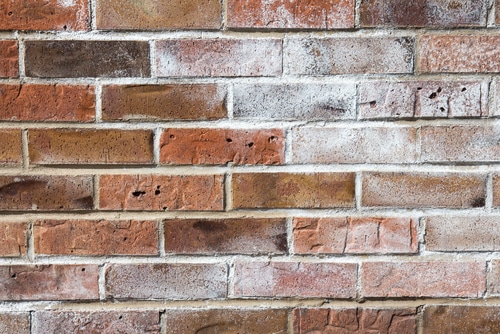
Lime bloom – All cementitious materials are susceptible to this occurrence, sometimes referred to as efflorescence. It is unsightly, appearing as a general lightening or discolouration on coloured cement-based products that are otherwise sound and fully cured. It doesn’t result from a fault with the product; rather, it results from the intolerance of cement to certain conditions during its early stage of hydration.
Structural damage – If there is water or moisture present during the rendering process, it can soak into the walls of your property. Ultimately, this can lead to penetrating damp and rot. Both these issues can affect the structural integrity of the foundations.
Trapped moisture – In the same vein as structural damage, trapped moisture can be particularly damaging to timber frames, leading to timber rot.
Colour/texture inconsistency – The presence of water in any render or paint can alter the final colour finish. The render comes in different grain sizes, and any alteration of the consistency due to rendering in the rain could result in a finish that does not set and cure correctly.
Strong winds – Strong winds may initially seem advantageous when you’re considering rendering in the rain and other poor weather. In theory, they will cut curing times, right? The primary issue is that strong winds can actually dry the render too quickly. In turn, this leaves render highly susceptible to cracking. The finish could also end up being patchy.
The solutions
The repeated cooling and thawing in the winter months can also cause hairline cracks. The material expands and contracts, creating small disruptions to the uniformity of the wall. With continuous cooling and thawing, these cracks can expand further, allowing more water ingress. This is a serious risk when rendering in the rain. So what are the solutions to these issues?
Check forecast – The simplest way to find the best time to complete the render stage of your project. Check the forecast often to see when you can work.
Protect substrate – It’s absolutely crucial that the substrate is kept clean and dry. The adhesion of your basecoat, and consequently, the adhesion of your insulation and render systems rely on this. The best way to do this is to ensure you have installed sufficient tarping and waterproof mesh on your scaffolding. This will protect your substrate from water ingress and high winds.
Keep products safe – Your products need the same attention and consideration as your substrate. They must stay cool and dry. It is crucial to keep them elevated off the floor to avoid any water soaking into the bottom of the materials. Any form of dry storage like a container is the best way to prevent the weather affecting your materials.
Start early – Use all the time available to you. There may be small windows of dry and sunny weather on winter mornings, where you can jump onto rendering.
Be prepared – Scheduling based on the forecast and delivery of your materials is very important. If you know your window of good weather, you can plan how much of your project you can render. Therefore, you can also ensure that all your materials and tools are ready. Preparation also includes having the right workforce in place. You’ll require at least two people, wherein, one applies the render and one follows to rub up. This maintains a wet edge and ensures that there are no trowel lines.
Our products
At EWI Store, we offer several products which can help you work despite the adverse weather. Whilst rendering in the rain is pretty much impossible unless you create an atmospheric bubble around the project, colder weather and smaller curing windows won’t stop you. The Winter Adhesive is particularly useful as the basecoat in the winter months as it allows you to work down to 0°C. Microfibres provide extra flexibility, which is crucial given the volatile drying times in bad weather. The product is also hydrophobic and frost-proof, so it is uniquely suited to winter work.
Our Render Accelerator is a high quality solution that can be used to accelerate the curing process. If you live in a colder climate, where the drying process takes a long time, this product is a worthwhile investment. It allows installers to continue to install thin-coat render systems throughout the winter months. EWI-020 works to speed up this curing process, allowing for a faster job completion rate.
The premier render choice for any weather affected areas is Silicone Render, as it is highly hydrophobic. The flexibility will also work to combat the cooling and thawing process discussed above.
Lastly, tarpaulins and temporary downpipes are excellent ancillary products for weatherproofing your project. Tarps keep water out, while temporary downpipes help with incomplete guttering systems.
-
Silicone Render (EWI-075) – 25KG
Rated 4.83 out of 5From £83.99 Incl. VATFrom £69.99 Excl. VAT -
Temporary Downpipe (150mm x 165m)
£35.99 Incl. VAT£29.99 Excl. VAT -
Water Resistant Tarpaulin Sheet
From £3.73 Incl. VATFrom £3.11 Excl. VAT -
Winter Adhesive (EWI-221) – 25kg
Rated 5.00 out of 5£15.00 Incl. VAT£12.50 Excl. VAT£19.01 Incl. VAT£15.84 Excl. VAT -
Render Accelerator (EWI-020) – 100ml
Rated 4.50 out of 5£6.72 Incl. VAT£5.60 Excl. VAT£8.30 Incl. VAT£6.92 Excl. VAT
Facebook
Twitter
LinkedIn
Your cart
Trade Account Login

We use cookies on our website to give you the most relevant experience by remembering your preferences and repeat visits. By clicking “Accept All”, you consent to the use of ALL the cookies. However, you may visit "Cookie Settings" to provide personalised consent.
Manage consent
Privacy Overview
This website uses cookies to improve your experience while you navigate through the website. Out of these, the cookies that are categorized as necessary are stored on your browser as they are essential for the working of basic functionalities of the website. We also use third-party cookies that help us analyze and understand how you use this website. These cookies will be stored in your browser only with your consent. You also have the option to opt-out of these cookies. But opting out of some of these cookies may affect your browsing experience.
Necessary cookies are absolutely essential for the website to function properly. These cookies ensure basic functionalities and security features of the website, anonymously.
| Cookie | Duration | Description |
|---|---|---|
| __stripe_mid | 1 year | This cookie is set by Stripe payment gateway. This cookie is used to enable payment on the website without storing any patment information on a server. |
| __stripe_sid | 30 minutes | This cookie is set by Stripe payment gateway. This cookie is used to enable payment on the website without storing any patment information on a server. |
| _GRECAPTCHA | 5 months 27 days | This cookie is set by the Google recaptcha service to identify bots to protect the website against malicious spam attacks. |
| apbct_cookies_test | session | CleanTalk sets this cookie to prevent spam on comments and forms and act as a complete anti-spam solution and firewall for the site. |
| apbct_page_hits | session | CleanTalk sets this cookie to prevent spam on comments and forms and act as a complete anti-spam solution and firewall for the site. |
| apbct_prev_referer | session | Functional cookie placed by CleanTalk Spam Protect to store referring IDs and prevent unauthorized spam from being sent from the website. |
| apbct_site_landing_ts | session | CleanTalk sets this cookie to prevent spam on comments and forms and act as a complete anti-spam solution and firewall for the site. |
| apbct_site_referer | 3 days | This cookie is placed by CleanTalk Spam Protect to prevent spam and to store the referrer page address which led the user to the website. |
| apbct_timestamp | session | CleanTalk sets this cookie to prevent spam on comments and forms and act as a complete anti-spam solution and firewall for the site. |
| apbct_urls | 3 days | This cookie is placed by CleanTalk Spam Protect to prevent spam and to store the addresses (urls) visited on the website. |
| AWSALBCORS | 7 days | This cookie is managed by Amazon Web Services and is used for load balancing. |
| cookielawinfo-checkbox-advertisement | 1 year | Set by the GDPR Cookie Consent plugin, this cookie is used to record the user consent for the cookies in the "Advertisement" category . |
| cookielawinfo-checkbox-analytics | 11 months | This cookie is set by GDPR Cookie Consent plugin. The cookie is used to store the user consent for the cookies in the category "Analytics". |
| cookielawinfo-checkbox-functional | 11 months | The cookie is set by GDPR cookie consent to record the user consent for the cookies in the category "Functional". |
| cookielawinfo-checkbox-necessary | 11 months | This cookie is set by GDPR Cookie Consent plugin. The cookies is used to store the user consent for the cookies in the category "Necessary". |
| cookielawinfo-checkbox-others | 11 months | This cookie is set by GDPR Cookie Consent plugin. The cookie is used to store the user consent for the cookies in the category "Other. |
| cookielawinfo-checkbox-performance | 11 months | This cookie is set by GDPR Cookie Consent plugin. The cookie is used to store the user consent for the cookies in the category "Performance". |
| ct_checkjs | session | CleanTalk–Used to prevent spam on our comments and forms and acts as a complete anti-spam solution and firewall for this site. |
| ct_fkp_timestamp | session | CleanTalk sets this cookie to prevent spam on the site's comments/forms, and to act as a complete anti-spam solution and firewall for the site. |
| ct_pointer_data | session | CleanTalk sets this cookie to prevent spam on the site's comments/forms, and to act as a complete anti-spam solution and firewall for the site. |
| ct_ps_timestamp | session | CleanTalk sets this cookie to prevent spam on the site's comments/forms, and to act as a complete anti-spam solution and firewall for the site. |
| ct_sfw_pass_key | 1 month | CleanTalk sets this cookie to prevent spam on comments and forms and act as a complete anti-spam solution and firewall for the site. |
| ct_timezone | session | CleanTalk–Used to prevent spam on our comments and forms and acts as a complete anti-spam solution and firewall for this site. |
| elementor | never | This cookie is used by the website's WordPress theme. It allows the website owner to implement or change the website's content in real-time. |
| viewed_cookie_policy | 11 months | The cookie is set by the GDPR Cookie Consent plugin and is used to store whether or not user has consented to the use of cookies. It does not store any personal data. |
Functional cookies help to perform certain functionalities like sharing the content of the website on social media platforms, collect feedbacks, and other third-party features.
| Cookie | Duration | Description |
|---|---|---|
| __zlcmid | 1 year | This cookie is used by Zendesk live chat and is used to store the live chat ID. |
| bcookie | 2 years | LinkedIn sets this cookie from LinkedIn share buttons and ad tags to recognize browser ID. |
| bscookie | 2 years | LinkedIn sets this cookie to store performed actions on the website. |
| lang | session | LinkedIn sets this cookie to remember a user's language setting. |
| lidc | 1 day | LinkedIn sets the lidc cookie to facilitate data center selection. |
| UserMatchHistory | 1 month | LinkedIn sets this cookie for LinkedIn Ads ID syncing. |
Performance cookies are used to understand and analyze the key performance indexes of the website which helps in delivering a better user experience for the visitors.
| Cookie | Duration | Description |
|---|---|---|
| __utma | 2 years | This cookie is set by Google Analytics and is used to distinguish users and sessions. The cookie is created when the JavaScript library executes and there are no existing __utma cookies. The cookie is updated every time data is sent to Google Analytics. |
| __utmb | 30 minutes | Google Analytics sets this cookie, to determine new sessions/visits. __utmb cookie is created when the JavaScript library executes and there are no existing __utma cookies. It is updated every time data is sent to Google Analytics. |
| __utmc | session | The cookie is set by Google Analytics and is deleted when the user closes the browser. It is used to enable interoperability with urchin.js, which is an older version of Google Analytics and is used in conjunction with the __utmb cookie to determine new sessions/visits. |
| __utmt | 10 minutes | Google Analytics sets this cookie to inhibit request rate. |
| __utmv | 2 years | The __utmv cookie is set on the user's device, to enable Google Analytics to classify the visitor. |
| __utmz | 6 months | Google Analytics sets this cookie to store the traffic source or campaign by which the visitor reached the site. |
| sib_cuid | 6 months | Purechat uses this cookie to send data to purechat.com, to connect visitors to the reservation team and track visitors to stay on portal. |
| SRM_B | 1 year 24 days | Used by Microsoft Advertising as a unique ID for visitors. |
Analytical cookies are used to understand how visitors interact with the website. These cookies help provide information on metrics the number of visitors, bounce rate, traffic source, etc.
| Cookie | Duration | Description |
|---|---|---|
| _ga | 2 years | The _ga cookie, installed by Google Analytics, calculates visitor, session and campaign data and also keeps track of site usage for the site's analytics report. The cookie stores information anonymously and assigns a randomly generated number to recognize unique visitors. |
| _gat_gtag_UA_61069204_2 | 1 minute | Set by Google to distinguish users. |
| _gat_UA-61069204-2 | 1 minute | A variation of the _gat cookie set by Google Analytics and Google Tag Manager to allow website owners to track visitor behaviour and measure site performance. The pattern element in the name contains the unique identity number of the account or website it relates to. |
| _gcl_au | 3 months | Provided by Google Tag Manager to experiment advertisement efficiency of websites using their services. |
| _gid | 1 day | Installed by Google Analytics, _gid cookie stores information on how visitors use a website, while also creating an analytics report of the website's performance. Some of the data that are collected include the number of visitors, their source, and the pages they visit anonymously. |
| _uetsid | 1 day | This cookies are used to collect analytical information about how visitors use the website. This information is used to compile report and improve site. |
| CONSENT | 2 years | YouTube sets this cookie via embedded youtube-videos and registers anonymous statistical data. |
Advertisement cookies are used to provide visitors with relevant ads and marketing campaigns. These cookies track visitors across websites and collect information to provide customized ads.
| Cookie | Duration | Description |
|---|---|---|
| _fbp | 3 months | This cookie is set by Facebook to display advertisements when either on Facebook or on a digital platform powered by Facebook advertising, after visiting the website. |
| ANONCHK | 10 minutes | The ANONCHK cookie, set by Bing, is used to store a user's session ID and also verify the clicks from ads on the Bing search engine. The cookie helps in reporting and personalization as well. |
| fr | 3 months | Facebook sets this cookie to show relevant advertisements to users by tracking user behaviour across the web, on sites that have Facebook pixel or Facebook social plugin. |
| MUID | 1 year 24 days | Bing sets this cookie to recognize unique web browsers visiting Microsoft sites. This cookie is used for advertising, site analytics, and other operations. |
| NID | 6 months | NID cookie, set by Google, is used for advertising purposes; to limit the number of times the user sees an ad, to mute unwanted ads, and to measure the effectiveness of ads. |
| test_cookie | 15 minutes | The test_cookie is set by doubleclick.net and is used to determine if the user's browser supports cookies. |
| uuid | 6 months | MediaMath sets this cookie to avoid the same ads from being shown repeatedly and for relevant advertising. |
| VISITOR_INFO1_LIVE | 5 months 27 days | A cookie set by YouTube to measure bandwidth that determines whether the user gets the new or old player interface. |
| YSC | session | YSC cookie is set by Youtube and is used to track the views of embedded videos on Youtube pages. |
| yt-remote-connected-devices | never | YouTube sets this cookie to store the video preferences of the user using embedded YouTube video. |
| yt-remote-device-id | never | YouTube sets this cookie to store the video preferences of the user using embedded YouTube video. |
| yt.innertube::nextId | never | This cookie, set by YouTube, registers a unique ID to store data on what videos from YouTube the user has seen. |
| yt.innertube::requests | never | This cookie, set by YouTube, registers a unique ID to store data on what videos from YouTube the user has seen. |
Other uncategorized cookies are those that are being analyzed and have not been classified into a category as yet.
| Cookie | Duration | Description |
|---|---|---|
| _clck | 1 year | No description |
| _clsk | 1 day | No description |
| _uetvid | 1 year 24 days | No description available. |
| AnalyticsSyncHistory | 1 month | No description |
| apbct_pixel_url | session | No description |
| apbct_visible_fields_0 | session | No description |
| apbct_visible_fields_1 | session | No description |
| apbct_visible_fields_10 | session | No description |
| apbct_visible_fields_2 | session | No description |
| apbct_visible_fields_3 | session | No description |
| apbct_visible_fields_4 | session | No description |
| apbct_visible_fields_5 | session | No description |
| apbct_visible_fields_6 | session | No description |
| apbct_visible_fields_7 | session | No description |
| apbct_visible_fields_8 | session | No description |
| apbct_visible_fields_9 | session | No description |
| ct_checked_emails | session | No description |
| ct_has_scrolled | session | No description |
| ct_mouse_moved | session | No description |
| ct_screen_info | session | No description |
| ictf_master | never | No description available. |
| li_gc | 2 years | No description |
| m | 2 years | No description available. |
| SM | session | No description available. |
| testinfinitycookie | session | No description |
| woocommerce_show_tax | 7 days | No description available. |
| wp_woocommerce_session_c5ac76b408021294cb56bcc27eddf8a1 | 2 days | No description |


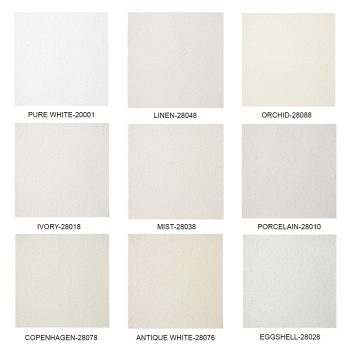
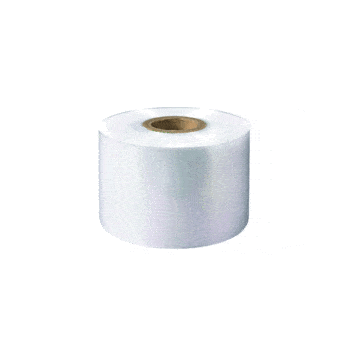
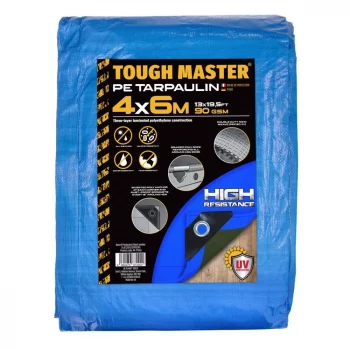
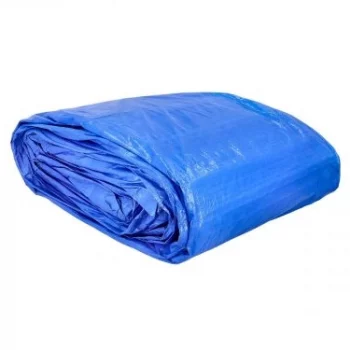
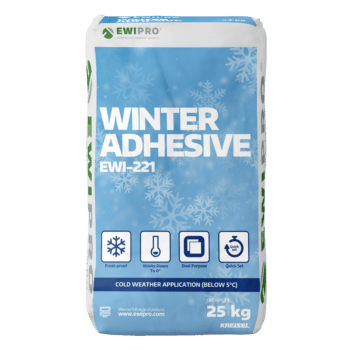
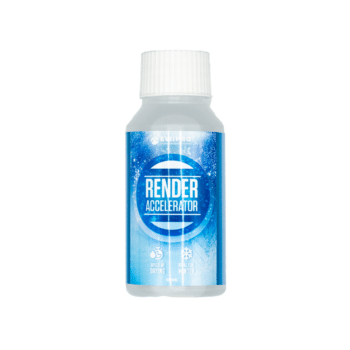
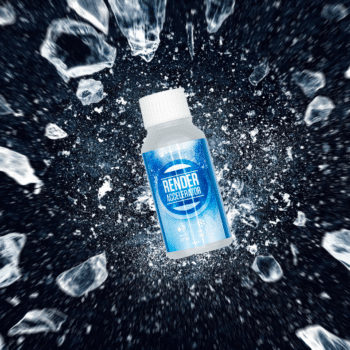
6 thoughts on “Tips For Rendering In The Rain”
What can I do about lime bloom? Does it just wash off?
It will do, just dampen the area with clean water, use a mild hydrochloric cleaner, and rinse off with a pressure washer. Let us know if it works fine!
Cheers, worked a treat.
Glad to hear it, if you need any more help, gives our sales team a call
You haven’t mentioned that If you got moisture in your walls, it’ll lead to some issues with your topcoat
Good timing on that Kev, we’ve just posted a blog covering issues with your render finish! Render Problems? Here’s How To Prevent & Fix Them!